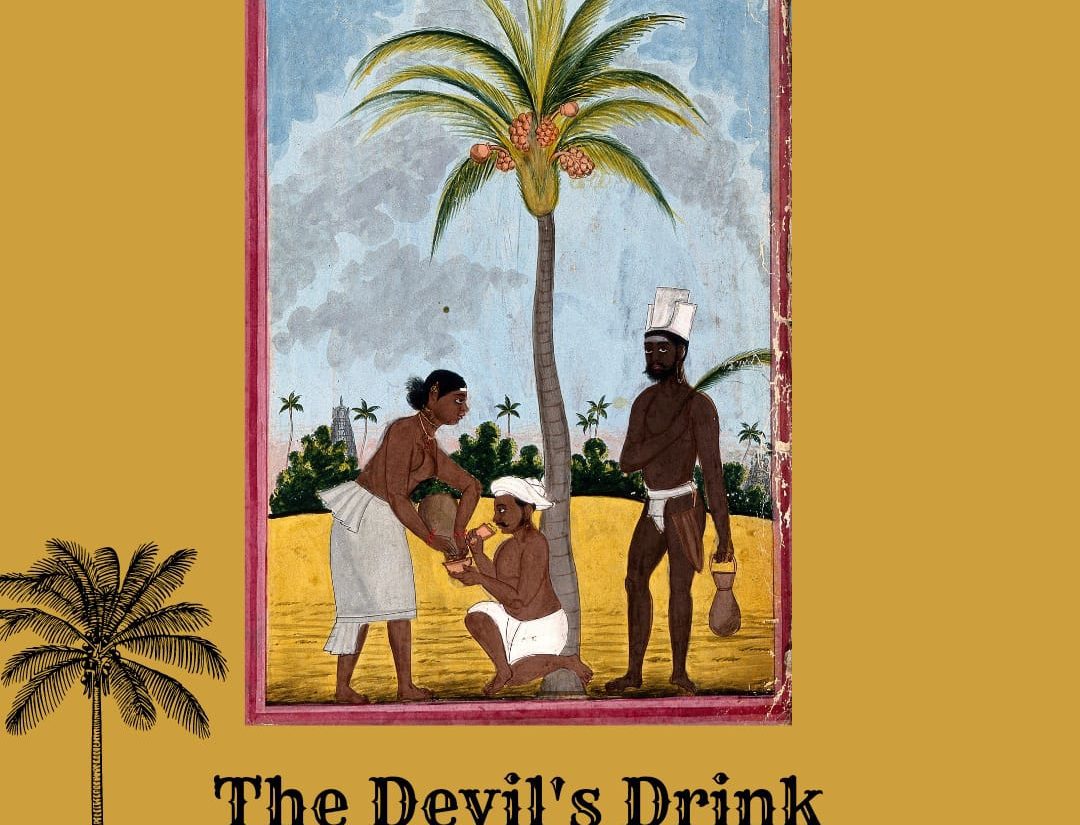
Article by EIH Researcher and Writer
Aswathy Mony
Toddy is the anglicized form of the Hindi word “Tari”, the fermented sweet sap of the tar or palmyra palm. Toddy shanties are local toddy shops selling alcoholic and non-alcoholic palm sap. Since the Sangam period, there are instances of the production and consumption of alcohol. Thiruvalluvar in his Tirukkural argues that drinking alcohol degenerates one’s character. It is referred to as tala by Megasthenes in 350 B.C and later by many European visitors. In 1676 Jean-Baptiste Tavernier noted that the kingdom of Golkonda derived great revenues from the production of toddy. At the turn of the 20 century, the Presidency of Fort St.George levied excise duty on intoxicating liquors and opium and it was the fourth most important source of revenue for the Presidency. The Presidency recognized three forms of alcohol production, country spirits(arracks, a distillation of palm wine], toddy [fermented palm juice], and European-style liquors. Toddy production supported a life of around 263,052 people in the Presidency accounting for around Rs. 7.1 million excise revenues. In 1681, John Fryer noted that even though toddy tappers in Carnatic areas occupied lower social status, some among them rose to the status of wealth and power. Father John DeBritto of Madurai Jesuit Mission noted in 1683 that the noble class people mentioned toddy as peytanneer [devil’s drink] while the people of Maravar caste considered toddy as the “milk of the goddess”. According to the Census of India of 1901, there are around 1.86 million people in the Presidency as members of toddy-drawing castes. High castes groups in 18 and 19th-century Kerala had a largely benevolent attitude towards the consumption of toddy. Toddy served the purpose of both secular and sacred purposes. For example, Nayars and other landholding castes used toddy to mobilize labor for their agricultural purposes. According to high caste large landowners, drinking was considered to be the symbol of status. Toddy also served a sacred purpose, in religious festivals and rituals. For example, in the pisharikavu festival in Quilandy, a caste group called Tiyyas used to offer toddy to the gods. The Protestant missionaries used the scriptural prohibitions against toddy consumption in Hinduism in Islam to find grounds for solidarity. The colonial-era also witnessed excise reforms starting from the Bombay Abkari Act of 1878, the Madras Abkari Act of 1886, etc. Today, the production of toddy is regulated by many legislations from state governments.
Toddy tapping is done in the process. The first step is picking a blooming coconut tree with healthy coconut fruit buds. The tree is then tied with coconut husks with rope. The newly unopened buds of the palm flower are cut leaving 95% remaining on the tree. The whole bud is then beat. The cut bud is then bound with tender coconut leaf or a rope and a paste of table leaf is applied to the cut portion to keep away from any bacterial infection. After beating the new flower bud for a week, the flower begins to ooze sap and it can be collected twice a day. The sap is filtered before it is served. Palm jaggery, vinegar, arrack, and yeast are made from toddy. the toddy tappers community is generally called ‘Thiya’.Even though alcoholism is a major issue, toddy tapping was instrumental in unifying the social structure of southern India, especially in the state of Kerala.
REFERENCES
- Sridhar, Siddharth. Socio-Economic Change and caste Uplift: A Comparative Study of Toddy-Tapper Caste Uplift Movements Along The Malabar and Coromandel Coasts,1870-1930,11 May 2016
- Gupta,Aashish,P Bhavana,D,M,Lomte .The Potential of Kallu (Toddy or Palm Wine) and Its Accompanishments to Attract Tourists in Rural Parts of Kerala.2018
- In Toddy, Numbers don’t Match, November 16,2021, thehindu.com




















